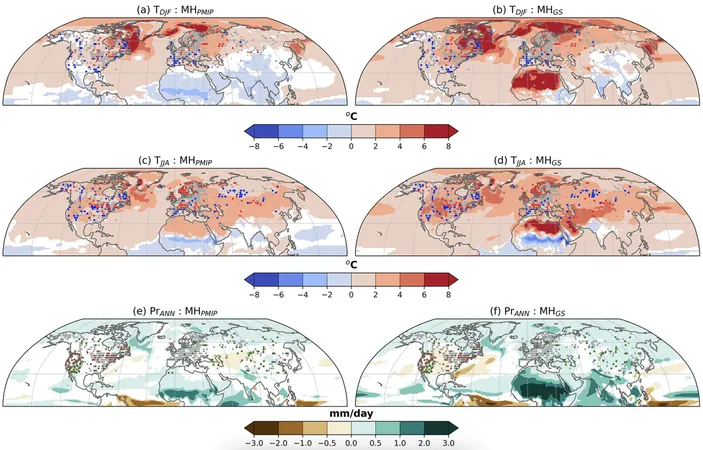
Unveiling the Hidden Secrets of the Sahara: How Greening Could Transform the Northern Hemisphere Climate!
2024-11-02
Author: Siti
In a fascinating turn of events, the Sahara Desert, long viewed as an arid wasteland devoid of life, has showcased nature’s resilience through periods of verdant transformation known as "greening." This isn’t just a historical quirk; recent studies suggest that this phenomenon may hold the key to altering climate patterns across the Northern Hemisphere.
The Historical Context of Greening
Historical data tells us that one of the most significant greening periods occurred between 5,000 and 11,000 years ago during the early Holocene. Thanks to increased solar radiation during the boreal summer — specifically when Earth is closest to the sun during its orbit — changes in seasonal weather patterns resulted in moisture-rich conditions across the region. This set the stage for an explosion of evergreen shrubs thriving across the Sahara at that time.
Impact of Greening on Climate Patterns
A groundbreaking modeling study published in *Climate of the Past* has illuminated the extensive impact of Saharan greening on climate conditions far beyond Africa's borders. Dr. Marco Gaetani and his team from the IUSS School for Advanced Studies in Pavia, Italy, utilized advanced climate simulations to reveal how this vegetative surge dramatically influenced atmospheric circulation patterns in the Northern Hemisphere, particularly during the summer months.
Regions across Scandinavia and North America experienced warmer and drier conditions, while Western Europe faced milder winters and hotter summers. Central Europe warmed overall, but Mediterranean areas turned cooler and wetter, and Central Asia saw a transformation with increased precipitation throughout the year. Such dramatic shifts in climate stemmed from alterations in the Walker Circulation—a major atmospheric pattern that significantly impacts weather across the globe.
The North Atlantic Oscillation's Role
Moreover, the North Atlantic Oscillation—a phenomenon affecting temperature and precipitation through sea level pressure changes—exhibited a marked shift as well, from positive to negative phases. This shift resulted in droughts in the eastern Mediterranean and polar North America, whilst northern and central Europe experienced cooler, wetter summers.
Long-lasting Climate Changes
What’s particularly striking is the long-lasting nature of these climate changes, attributed to the substantial 80% reduction in dust emissions caused by the growth of vegetation. Additionally, the capacity of the Earth's surface to reflect solar energy—measured by albedo—dropped dramatically from 0.30 in barren desert areas to just 0.15 in shrub-dominated territories, intensifying tropical heating while promoting water retention and mitigating droughts.
Implications for the Future
As the world grapples with the challenges of climate change today, this research provides not just a window into the Earth’s climatic past but also illuminates potential future outcomes. With rainfall patterns shifting northwards across Africa and a burgeoning of vegetation, there’s an intricate web of interactions waiting to be explored. Understanding these dynamics could be pivotal for addressing contemporary environmental issues and shaping conservation efforts.
Could the Sahara's greening hold the secrets to reversing some of the adverse impacts of climate change? Only time will tell, but the implications are profound—suggesting that even the most desolate landscapes may be key to restoring balance in our global climate system. Stay tuned as researchers dive deeper into this potential climate game-changer!


 Brasil (PT)
Brasil (PT)
 Canada (EN)
Canada (EN)
 Chile (ES)
Chile (ES)
 España (ES)
España (ES)
 France (FR)
France (FR)
 Hong Kong (EN)
Hong Kong (EN)
 Italia (IT)
Italia (IT)
 日本 (JA)
日本 (JA)
 Magyarország (HU)
Magyarország (HU)
 Norge (NO)
Norge (NO)
 Polska (PL)
Polska (PL)
 Schweiz (DE)
Schweiz (DE)
 Singapore (EN)
Singapore (EN)
 Sverige (SV)
Sverige (SV)
 Suomi (FI)
Suomi (FI)
 Türkiye (TR)
Türkiye (TR)